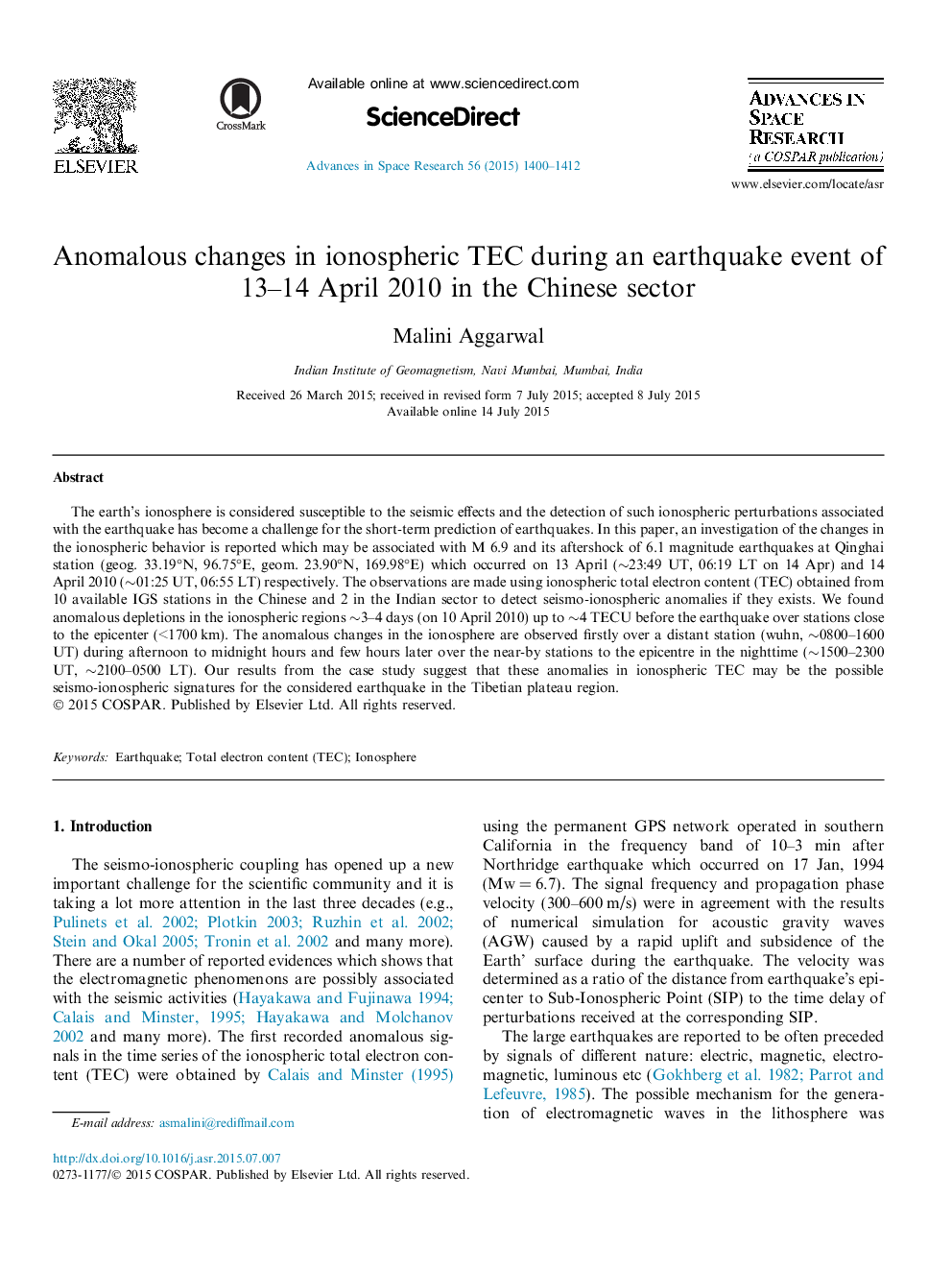| Article ID | Journal | Published Year | Pages | File Type |
|---|---|---|---|---|
| 1763739 | Advances in Space Research | 2015 | 13 Pages |
Abstract
The earth's ionosphere is considered susceptible to the seismic effects and the detection of such ionospheric perturbations associated with the earthquake has become a challenge for the short-term prediction of earthquakes. In this paper, an investigation of the changes in the ionospheric behavior is reported which may be associated with M 6.9 and its aftershock of 6.1 magnitude earthquakes at Qinghai station (geog. 33.19°N, 96.75°E, geom. 23.90°N, 169.98°E) which occurred on 13 April (â¼23:49 UT, 06:19 LT on 14 Apr) and 14 April 2010 (â¼01:25 UT, 06:55 LT) respectively. The observations are made using ionospheric total electron content (TEC) obtained from 10 available IGS stations in the Chinese and 2 in the Indian sector to detect seismo-ionospheric anomalies if they exists. We found anomalous depletions in the ionospheric regions â¼3-4 days (on 10 April 2010) up to â¼4 TECU before the earthquake over stations close to the epicenter (<1700 km). The anomalous changes in the ionosphere are observed firstly over a distant station (wuhn, â¼0800-1600 UT) during afternoon to midnight hours and few hours later over the near-by stations to the epicentre in the nighttime (â¼1500-2300 UT, â¼2100-0500 LT). Our results from the case study suggest that these anomalies in ionospheric TEC may be the possible seismo-ionospheric signatures for the considered earthquake in the Tibetian plateau region.
Related Topics
Physical Sciences and Engineering
Earth and Planetary Sciences
Space and Planetary Science
Authors
Malini Aggarwal,
